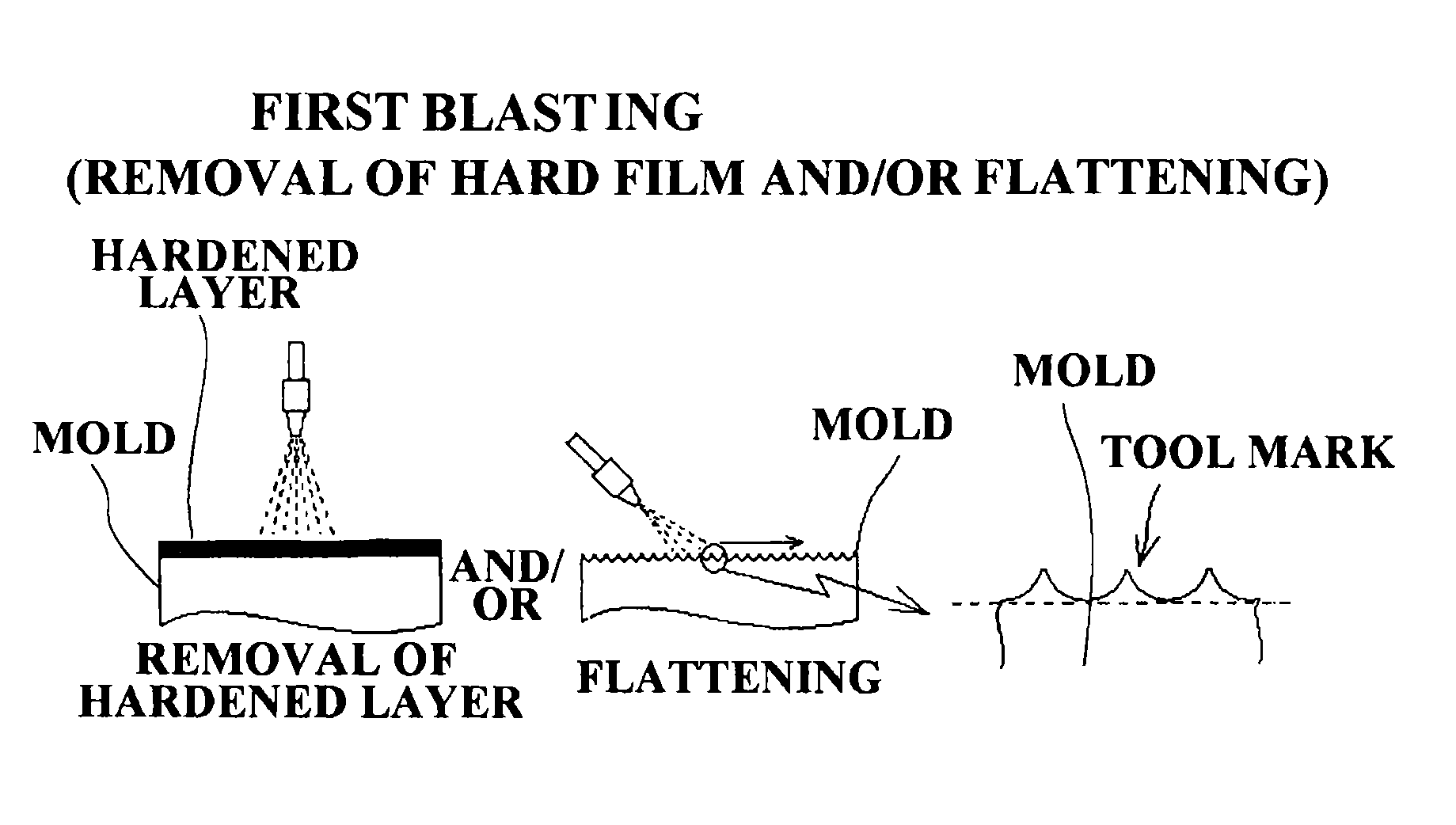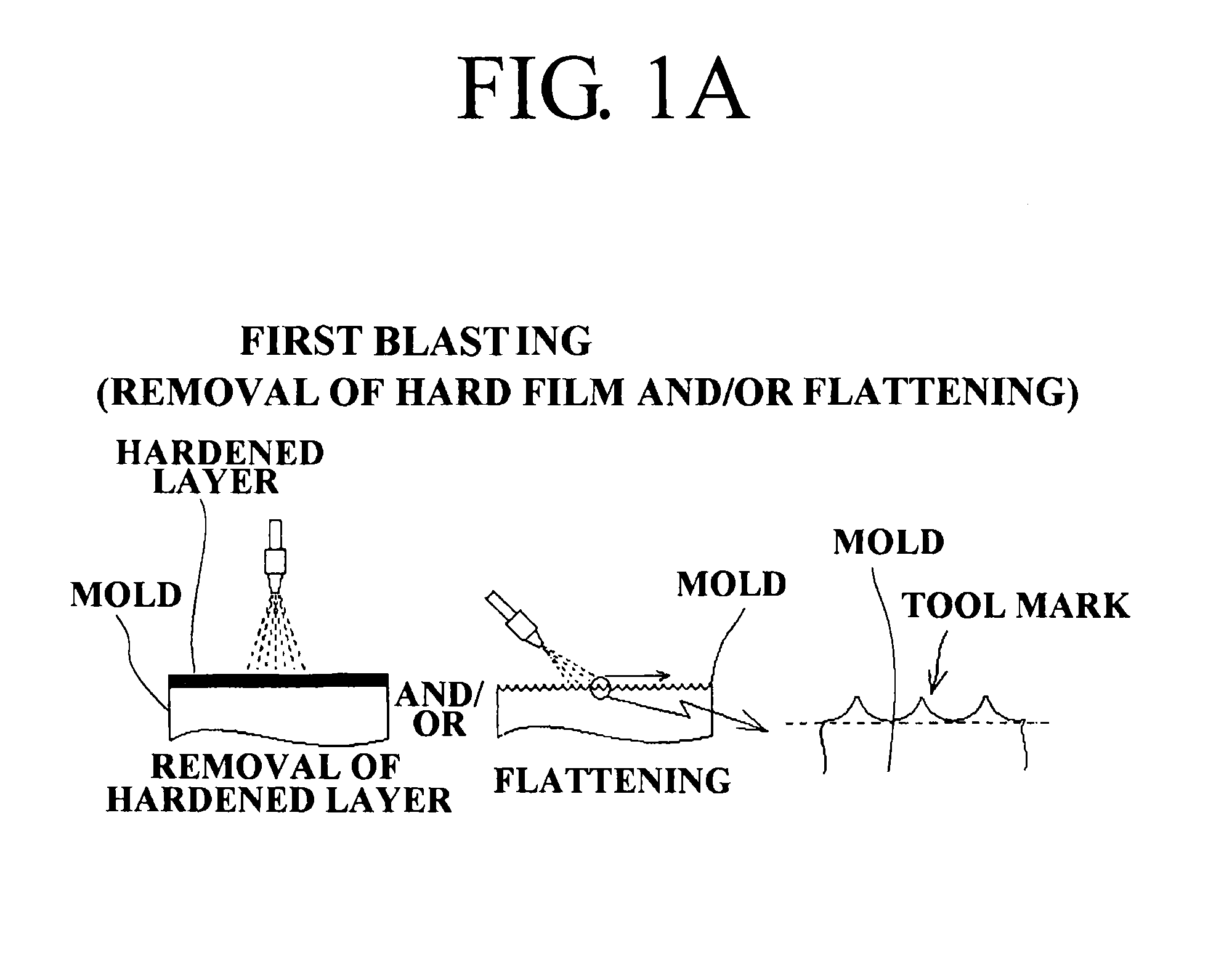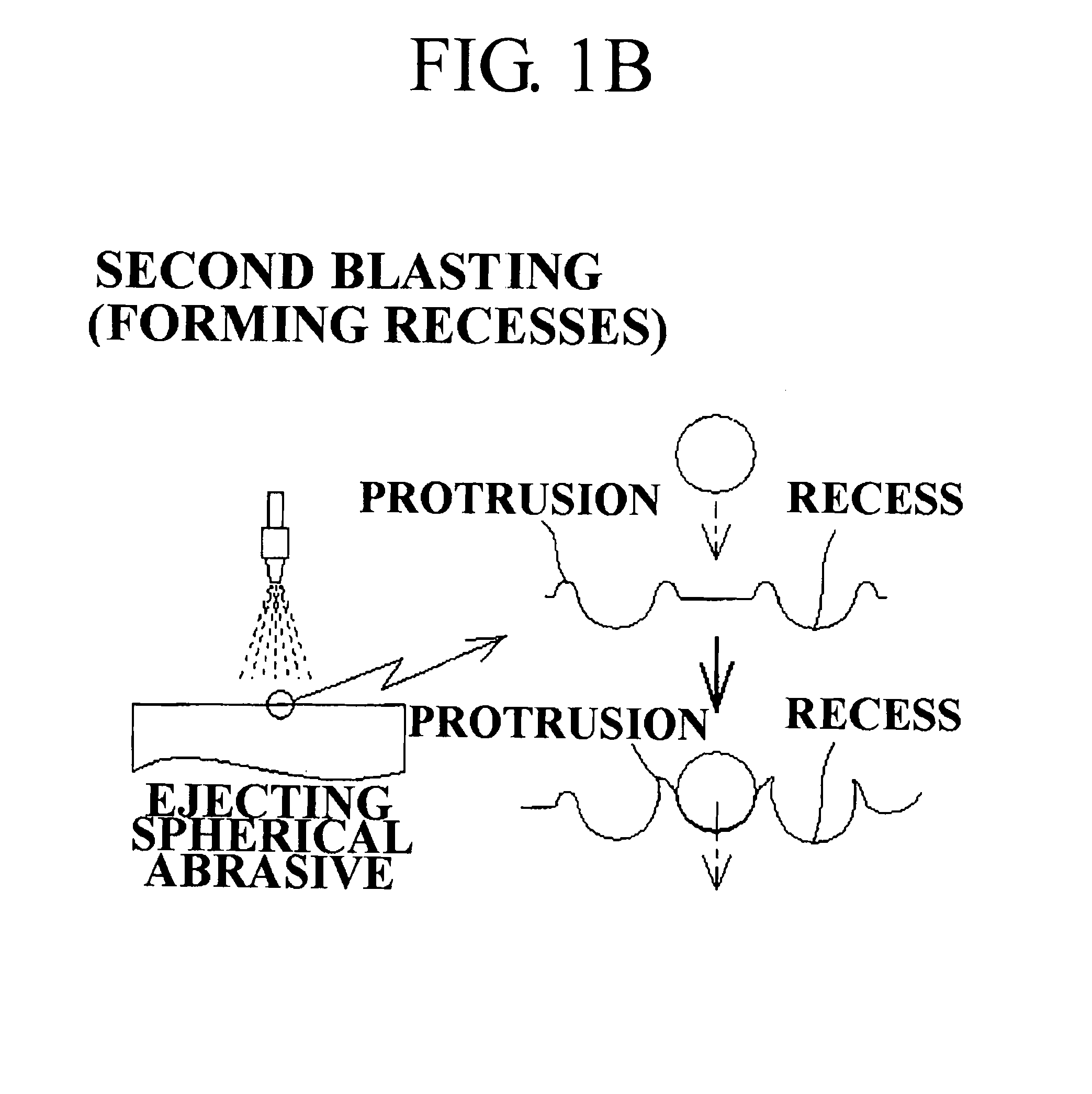Method of treating surface of mold and mold having surface treated by said method
a surface treatment and mold technology, applied in the direction of manufacturing tools, foundry molds, foundry patterns, etc., can solve the problems of reducing demoldability, increasing the number of molds having a complex shape, and significantly reducing the productivity of molding, so as to achieve easy flow, reduce contact resistance when the workpiece is removed from the mold, and easy to even out
- Summary
- Abstract
- Description
- Claims
- Application Information
AI Technical Summary
Benefits of technology
Problems solved by technology
Method used
Image
Examples
example 2 0.25
[0112
(The demolding resistancedemolding resistance were measured using a piezoelectric quartz-crystal sensor manufactured by Kistler Japan Co., Ltd.; Comparative Example was assumed to be 1.0)
[0113]From the above descriptions, it is understood that the demolding resistance is as low as from 20% to 25% of that of the Comparative Example, although the example of the present invention is not so different from the Comparative Example in terms of surface roughness.
PUM
| Property | Measurement | Unit |
|---|---|---|
| diameter | aaaaa | aaaaa |
| inclination angle | aaaaa | aaaaa |
| inclination angle | aaaaa | aaaaa |
Abstract
Description
Claims
Application Information
 Login to View More
Login to View More - R&D
- Intellectual Property
- Life Sciences
- Materials
- Tech Scout
- Unparalleled Data Quality
- Higher Quality Content
- 60% Fewer Hallucinations
Browse by: Latest US Patents, China's latest patents, Technical Efficacy Thesaurus, Application Domain, Technology Topic, Popular Technical Reports.
© 2025 PatSnap. All rights reserved.Legal|Privacy policy|Modern Slavery Act Transparency Statement|Sitemap|About US| Contact US: help@patsnap.com



